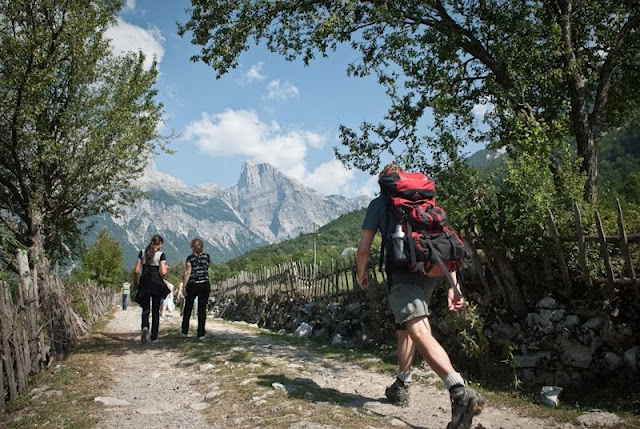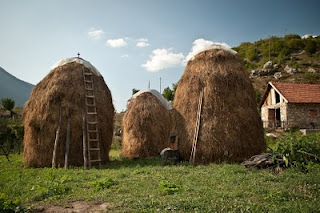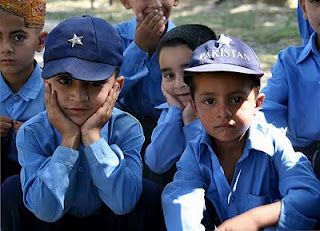Showing posts from category youth.
-
Demographic Trends
›Worldfocus recently featured two pieces on the Arab world’s burgeoning population. “Demographics of the Arab World,” a radio broadcast, brings together Magda Abu-Fadil of the American University in Beirut and Bernard Haykel of Princeton University for a look at the region’s demographic trends. Despite possessing different political systems and being at different levels of economic development, demographic challenges of youth bulges, emigration, and gender gaps are common to countries across the Arab world. “Arab World Experiences Rapid Population Explosion,” a written interview with demographer Patrick Gerland of the United Nations Population Division, tackles similar issues. Topics of discussion include demographic variations between Middle Eastern nations, fertility rates, the consequences of the region’s youth bulge, and best- and worst-case scenarios for the Arab world’s future.
State of the World’s Cities 2010/2011: Bridging the Urban Divide is the most recent edition of UN-HABITAT’s biennial outlook into global population centers. Analyzing the “the complex social, political, economic, and cultural dynamics of urban environments,” the report explores the “ways in which many urban dwellers are excluded from the advantages of city life.” UN Secretary General Ban Ki-Moon draws a connection between cities and climate change in the report’s preface, writing, “With over half the world’s population now living in cities, and cities making a disproportionate contribution to climate change, urbanization is one of the ‘crucial agendas’ of our time.” -
The Feed for Fresh News on Population
›March 25, 2010 // By Wilson Center StaffUSAID’s Gloria Steele offers written testimony on the FY2011 Global Health and Child Survival (GH CS) budget request before the House Appropriations Subcommittee on State, Foreign Operations
Andrew Revkin gives a shout-out to family planning and notes the lack of population discussion at Copenhagen in his blog post, “From Wishful Thinking to Real-World Action on Climate“
Video of Secretary of State Hilary Clinton addressing the Commission on the Status of Women in which she discusses the Global Health Initiative, maternal mortality, family planning, and “gendercide“
Family planning-environmental connections headline PATH‘s March edition of Outlook
Youth bulges and social conflict are noted in Nicholas Kristoff’s recent article on child marriages in Yemen
Follow Geoff Dabelko on Twitter for more population, health, environment, and security updates -
Imagine There Are No Countries: Conservation Beyond Borders in the Balkans
›International peace parks have captured the imagination of visionaries like Nelson Mandela, who called them a “concept that can be embraced by all.” Such parks—also known as transboundary protected areas—span national boundaries, testifying to the peaceful collaborative relationship between neighboring countries and to the co-existence of humans and nature.
Peace parks seek to simultaneously promote regional peace and stability, conserve biodiversity, and stimulate job creation. How can they accomplish such ambitious goals?- Biodiversity: The political borders and physical barriers within the park are removed, allowing animals and humans to migrate freely. In addition, surveys of the area’s biodiversity don’t stop at sovereign borders, but are instead conducted on an ecosystem basis.
- Job creation: Developing eco-tourism—one of the fastest-growing industries in the world—provides people living near peace parks an incentivized alternative to exhausting the very resource base on which their survival depends.
- Peace and stability: To jointly manage natural resources successfully requires countries to collaborate through cross-boundary committees on conservation, safety and security, finance, human resources, legislation, and tourism.
 My organization, International Peace Park Expeditions, uses experiential peacebuilding, academic programs, and professional trainings in international peace parks to integrate theory with practice. We seek to develop leadership and collaboration among three distinct, but complementary, groups: students and professors, transboundary protected area professionals, and youth from the peace park countries.
My organization, International Peace Park Expeditions, uses experiential peacebuilding, academic programs, and professional trainings in international peace parks to integrate theory with practice. We seek to develop leadership and collaboration among three distinct, but complementary, groups: students and professors, transboundary protected area professionals, and youth from the peace park countries.
Our Summer 2010 programs focus on the proposed peace park in the Western Balkans’ Prokletije/Bjeshket e Namuna mountains, between Albania and the newly independent countries of Montenegro (2006) and Kosovo (2008), which were formerly part of Yugoslavia. The Balkans Peace Park Project, a UK charity and their local network of partner organizations and individuals, first conceptualized the Balkans Peace Park, an area of approximately 4000 square km, in 2001.
This summer, participants in our professional training symposium will collaboratively develop a more precise and dynamic map. Students and young leaders in our other two programs will learn about peace parks while trekking together across the borders into all three countries.
Experiential Peacebuilding (July 19-25, 2010)
Experiential Peacebuilding programs combine outdoor experiential education and practical skills training in peacebuilding to foster the development of a community of young leaders capable of catalyzing positive peaceful changes in their communities. This summer’s program is being developed in conjunction with our local partner organizations (ERA and Marimangut in Kosovo; Outdoor Albania and High Albania in Albania; and PSD Prokletija in Montenegro). The primary goals of these programs are to unite youth from conflict-affected communities to develop relationships across borders; transform negative attitudes and stereotypes; and create a core group of young leaders with the skills, tools, and motivation to generate and direct changes in their communities.
Academic Expedition (June 7-26 and August 2-21, 2010)This three-week, three-credit course, “Conservation Beyond Borders,” will combine traditional academic teaching with proven experiential learning methodologies to create a unique, dynamic expedition that will provide students with a strong understanding of the theory and practice of international peace parks. Course readings and lectures will provide the academic base, and guest lectures from subject-matter experts working in the field will create the bridge; both will address sustainable forestry management, biodiversity surveys, eco-tourism plans, development and infrastructure planning, environmental conservation, water resource management, peacebuilding initiatives, and cross-border projects. First-hand experience trekking through the proposed Balkans Peace Park, crossing the borders of Albania, Kosovo, and Montenegro, and living among the local people will bring theory to life.
Professional Training Symposium (July 8-9, 2010)
This year’s Professional Field Training Symposium, “Critical Transboundary Environmental Linkages,” will bring together experts, policymakers, and stakeholders from the Prokletije/Bjeshket e Namuna region to discuss cross-border ecotourism, biodiversity mapping, and sustainable forestry management. The symposium seeks to build trust through cross-border collaboration, and to improve environmental management in the peace park region. Participants will create a Google Earth map to house shared environmental data and visit two project sites in the proposed peace park. Todd Walters is the founder and executive director of International Peace Park Expeditions. He holds a master’s degree in International Peace and Conflict Resolution from American University’s School of International Service, and is a National Outdoor Leadership School (NOLS) certified wilderness guide. While at AU, he worked as an intern for the Environmental Change and Security Program.
Todd Walters is the founder and executive director of International Peace Park Expeditions. He holds a master’s degree in International Peace and Conflict Resolution from American University’s School of International Service, and is a National Outdoor Leadership School (NOLS) certified wilderness guide. While at AU, he worked as an intern for the Environmental Change and Security Program.
Photos courtesy IPPE/Cory Wilson. -
Watch: Harriet Birungi: Challenges Facing HIV-Positive Adolescents in Kenya
›“Services are not necessarily very adolescent-friendly, so when you get children who are HIV-positive they are likely to face discrimination,” says Harriet Birungi, an associate in the Reproductive Health Program with the Population Council in Kenya, in this interview with ECSP’s Gib Clarke following the Global Health Initiative’s Integrating HIV/AIDS and Maternal Health Services panel.
According to Birungi, medical service censoring and targeted exclusion from schools are among the top challenges facing Kenyan adolescents living with HIV/AIDS. She hopes better support systems and intervention strategies, especially for pregnant individuals, will help medical personnel more quickly identify HIV-positive young adults needing critical medical services. -
The Kids Aren’t Alright: Surveying Pakistan’s Youth
›November 24, 2009 // By Geoffrey D. DabelkoA new survey of Pakistani youth shows why the country is Exhibit A for taking seriously the potent combination of demography and lack of education and employment. Funded by the British Council, the survey shows how Pakistan’s “youth bulge” can be both threat and opportunity.
If it is coupled with investment in education and employment, the large youthful population can be a dynamic force: the much-heralded “demographic dividend”.
But without effective investment, a “demographic disaster” is more likely. The survey found that 1 in 4 young people are illiterate and only 1 in 5 have full-time jobs. Only 15 percent believe their country is headed in the right direction. Their faith is placed in their religion, not their government.
I might add Pakistan’s poor resource base to the perils of illiteracy, unemployment, and age structure. And let’s not ignore the other big problems of water, economics, and agriculture.
But one thing is certain: the population will continue to grow. The current and projected median projections are 180 million today, 246 million projected in 2025, and 335 million in 2050.
Those making big decisions in U.S. policy toward Pakistan and the region should consider all these underlying factors–and more.
Photo: Brave children of Bakalot, courtesy Flickr user amir taj. -
Pakistan’s Demographic Challenge Is Not Just Economic
›In a meeting with business leaders in Lahore in late October, Secretary of State Hillary Rodham Clinton pointedly warned of the potential economic impacts of Pakistan’s rapidly growing population: “There has to be…in any plan for your own economic future, a hard look at where you’re going to get the resources to meet these needs. You do have somewhere between 170 and 180 million people. Your population is projected to be about 300 million as the current birth rates, which are among the highest in the world, continue,” she said.
Pakistan is ranked 141 (out of 182 countries) in the Human Development Index. High rates of unemployment are compounded by low levels of education and human capital. Clinton noted that Pakistani women are more vulnerable to poverty; only 40 percent are literate, compared to 68 percent of men.
The Secretary’s emphasis on the need to provide adequate education, jobs, and resources to motivate economic growth and improve well-being is welcome. But demography also has important political consequences. U.S. policymakers and the Pakistani government should consider the impact of population dynamics on the country’s intensifying instability.
As Pakistan’s population grows rapidly, it is maintaining a very young age structure: in 2005, two-thirds of its population was younger than age 30. Research by Population Action International has shown that countries with very young age structures are three times as likely to experience outbreaks of civil conflict than those with a more balanced age distribution.
The members of a “youth bulge” are not inherently dangerous, but when governments are unable to foster employment opportunities or the prospects of stability, a young age structure can serve to exacerbate the risks of conflict, as recently noted by John O. Brennan, assistant to the president for Homeland Security and Counterterrorism, in a speech on “A New Approach to Safeguarding Americans.”
As Secretary Clinton and her colleagues consider the complex barriers to achieving peace and stability for Pakistan’s people, their humanitarian and development strategies should include demographic issues. When couples are able to choose the number and timing of their children, very young age structures like Pakistan’s, can change.
Family planning and reproductive health services are fundamental human rights, but remain out of reach for many in Pakistan, where one-quarter of all married women (and 31 percent of the poorest) have an unmet need for family planning.
Greater access to family planning would lower fertility rates and increase the share of working-age adults in the population. In this transition, countries can harness the “demographic dividend”—a change that could turn Pakistan’s age structure into an economic opportunity.
However, funding from the United States—the world’s largest single donor for international family planning—has declined by one-third over the past 15 years. The foreign assistance funding priorities of the Obama administration should reflect this recognition of the linkages between population, development, and stability.
By addressing the high unmet need for family planning and reproductive health services of women in countries like Pakistan, the United States could help to create a more balanced age structure in future generations—and promote stability at the same time.
Elizabeth Leahy Madsen is a research associate at Population Action International (PAI). She is the primary author of the 2007 PAI report The Shape of Things to Come: Why Age Structure Matters to a Safer, More Equitable World.. -
The Youth Bulge Question
›Right now, Rich Cincotta is live on “PRB Discuss Online,” answering the question, “Does a Young Age Structure Thwart Democratic Governments?” He is responding to reader questions like “Do Democratic governments being overcome by poverty and high unemployment rates have a chance to succeed” and “Why do you think the mainstream demography community is so slow or unwilling to pick up the research questions you have pursued?” Read the transcript and Cincotta’s recent article on this topic, “Half a Chance: Youth Bulges and Transitions to Liberal Democracy.”
A new World Bank working paper, “Breaking the Waves? Does Education Mediate the Relationship Between Youth Bulges and Political Violence?” by Bilal Barakat and Henrik Urdal finds “evidence that large, young male population bulges are more likely to increase the risk of conflict in societies where male secondary education is low”–particularly in low and middle-income countries. Mardy Shualy of Foreign Policy’s blog suggests policymakers do the math to compare the costs of secondary education to the economic toll of war and civil conflict.









